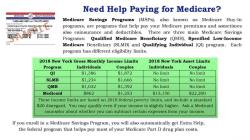How do I fill out a dementia form?
Filling out dementia-related forms typically involves providing detailed information about the individual's medical history, symptoms, and daily functioning. These forms are often used by healthcare professionals to assess and diagnose dementia. The specific form and requirements may vary depending on the healthcare provider or facility, but here are some general steps to help you fill out a dementia form:
Obtain the Form: Request the dementia assessment form from the healthcare provider, hospital, or facility where the assessment will take place. They may provide you with a physical form to complete or direct you to an online portal.
Read the Instructions: Carefully read any instructions or guidelines provided with the form. Understanding the purpose and how to complete the form correctly is crucial.
Provide Personal Information: Start by providing basic personal information about the individual being assessed. This typically includes their full name, date of birth, address, and contact information.
Medical History: Complete the section related to the individual's medical history. This may include questions about past medical conditions, surgeries, hospitalizations, and medications they are currently taking. Be as thorough as possible.
Symptom Assessment: Describe the individual's symptoms and any changes you've observed in their behavior, memory, or cognitive abilities. Include details about when the symptoms began and how they have progressed over time.
Daily Functioning: Provide information about the individual's daily functioning and activities of daily living (ADLs). This may involve questions about their ability to perform tasks like bathing, dressing, cooking, and managing finances.
Behavioral and Psychological Symptoms: Describe any behavioral or psychological symptoms the individual has exhibited, such as agitation, aggression, depression, or hallucinations.
Medical Records Release: If required, sign and complete any authorization forms allowing the healthcare provider to access the individual's medical records from other healthcare providers or facilities.
Caregiver Information: Some forms may ask for information about the caregiver or family member providing support to the individual. Include your name, contact information, and your relationship to the person being assessed.
Review and Sign: Before submitting the form, carefully review all the information you've provided for accuracy and completeness. Sign and date the form where required.
Submit the Form: Return the completed form to the healthcare provider or facility as instructed. This may involve mailing it, dropping it off in person, or submitting it electronically.
Follow Up: After submitting the form, the healthcare provider will review it and may schedule further assessments or tests to confirm a dementia diagnosis.
It's essential to be honest and thorough when filling out dementia forms, as accurate information helps healthcare professionals make an accurate diagnosis and develop an appropriate care plan. If you have any questions or concerns while completing the forms, don't hesitate to reach out to the healthcare provider's office for clarification or assistance.













